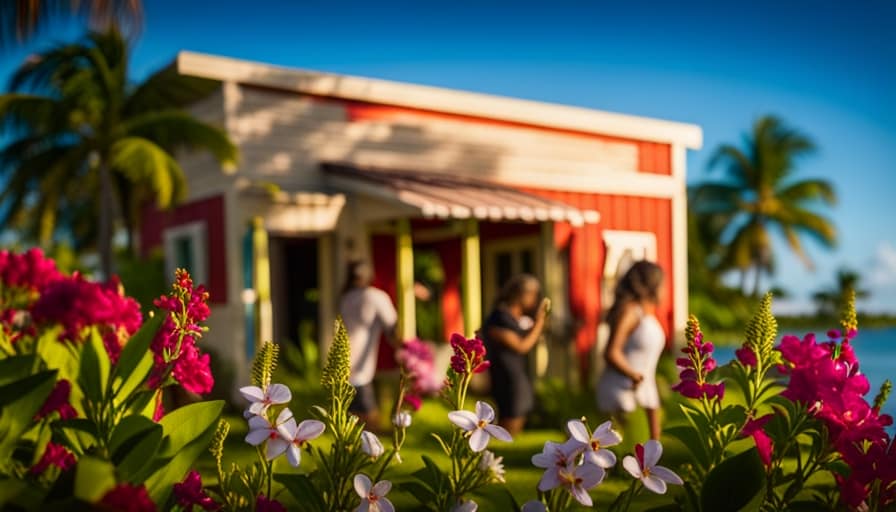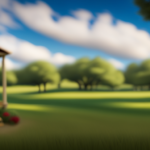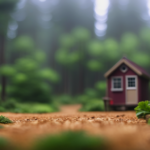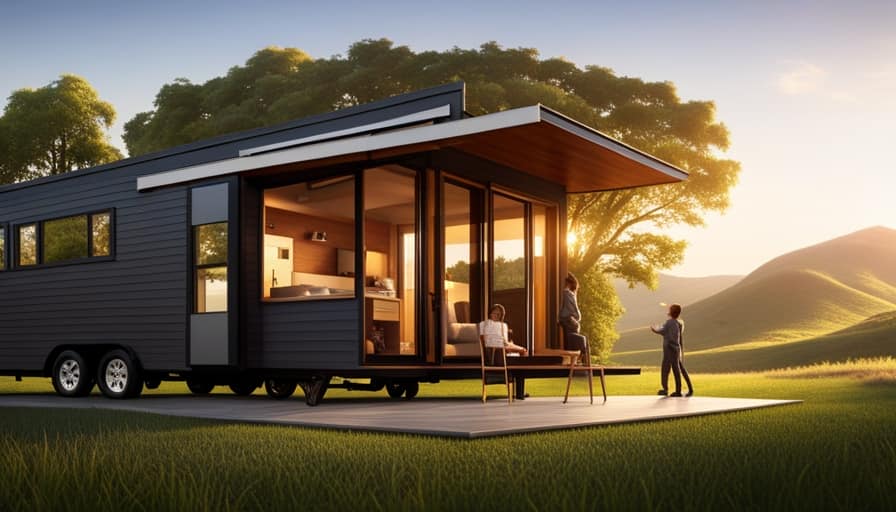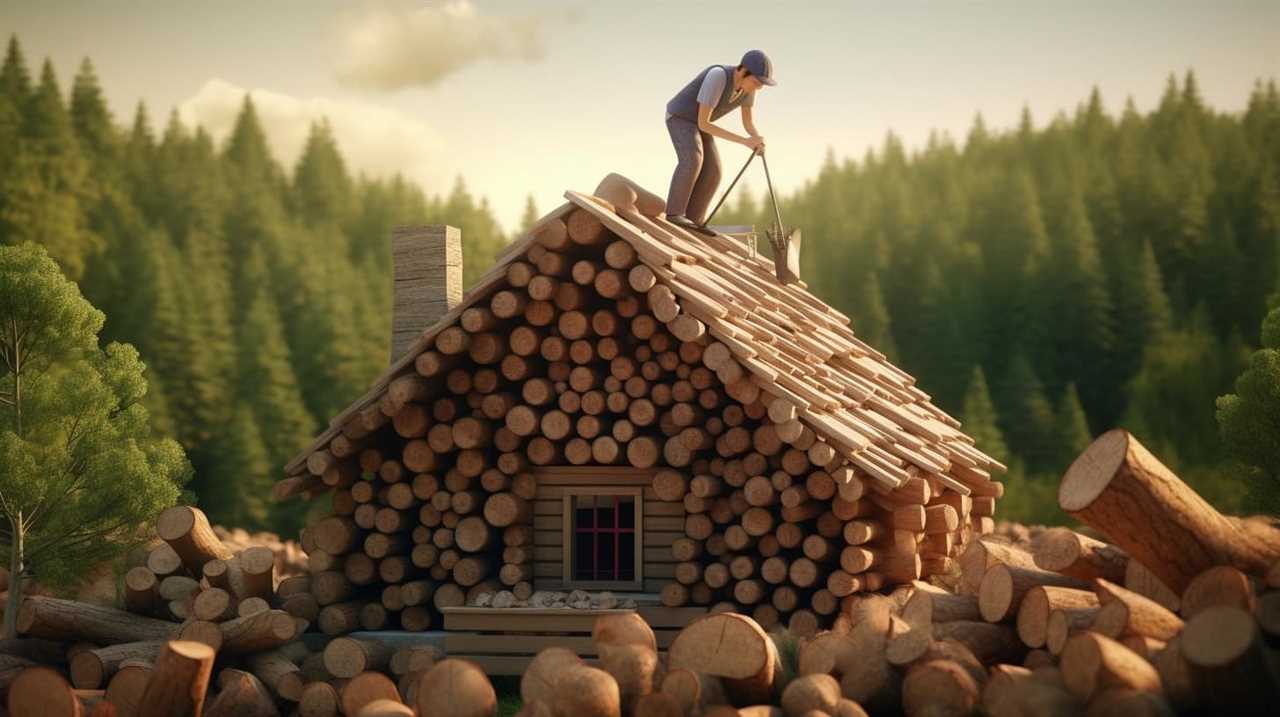Are you seeking to downsize and simplify your life? Rest assured, we have you covered. In our search for the top cities to live in a tiny house, we have thoroughly researched across the nation and analyzed the data.
From the hipster haven of Portland, Oregon, to the lively music scene in Nashville, Tennessee, we’ve compiled a list of the top 10 cities that are perfect for tiny house living.
So grab your blueprint and get ready to embark on a new adventure in these incredible cities.
Key Takeaways
- Portland, Oregon and Austin, Texas are favorable cities for tiny house living due to their regulations and affordable housing options.
- Seattle, Washington and Asheville, North Carolina have progressive zoning and building codes that make them suitable for tiny house living.
- Austin, Texas, Asheville, North Carolina, Nashville, Tennessee, Burlington, Vermont, and Minneapolis, Minnesota have strong community support networks for tiny house living.
- Savannah, Georgia, Nashville, Tennessee, Burlington, Vermont, and Minneapolis, Minnesota offer unique features and charm for those interested in tiny house living.
Portland, Oregon
We’ve found three reasons why Portland, Oregon is the perfect city to live in a tiny house.

Firstly, Portland has progressive tiny house zoning regulations in place. The city recognizes the need for affordable housing options and has created specific zoning codes that allow for the construction of tiny houses. This means that individuals interested in living in a tiny house have a greater chance of finding suitable land or a community to build their home.
Secondly, Portland is home to several thriving tiny house communities. These communities provide a supportive network for tiny house dwellers, offering shared resources, social interaction, and a sense of belonging.
Lastly, Portland’s commitment to sustainability aligns well with the tiny house movement. The city encourages environmentally friendly practices and promotes the use of renewable energy sources in tiny houses. This makes Portland an ideal city for those seeking a sustainable and community-oriented lifestyle in a tiny home.
Austin, Texas
When considering the best cities to live in a tiny house, Austin, Texas stands out for its favorable regulations. The city has implemented zoning ordinances that allow for the construction and placement of tiny houses, making it easier for individuals to pursue this alternative housing option.
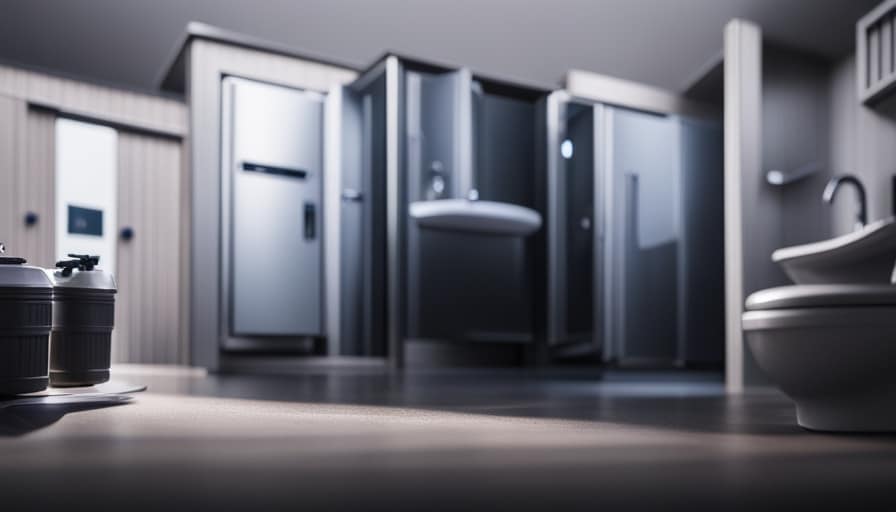
Additionally, Austin offers a range of affordable housing options, including tiny houses, which can help alleviate the strain of high living costs.
Moreover, the city boasts a strong network of community support for tiny house dwellers, fostering a sense of belonging and shared resources.
Tiny House Regulations
Living in a tiny house in Austin, Texas can be a rewarding and unique experience. Although there are regulations to consider, Austin provides several options for those interested in this lifestyle.
When it comes to tiny house zoning, the city allows tiny houses on wheels to be placed on private property as long as they meet certain requirements. These requirements include being connected to utilities, having a minimum square footage, and being situated in a designated area on the property.
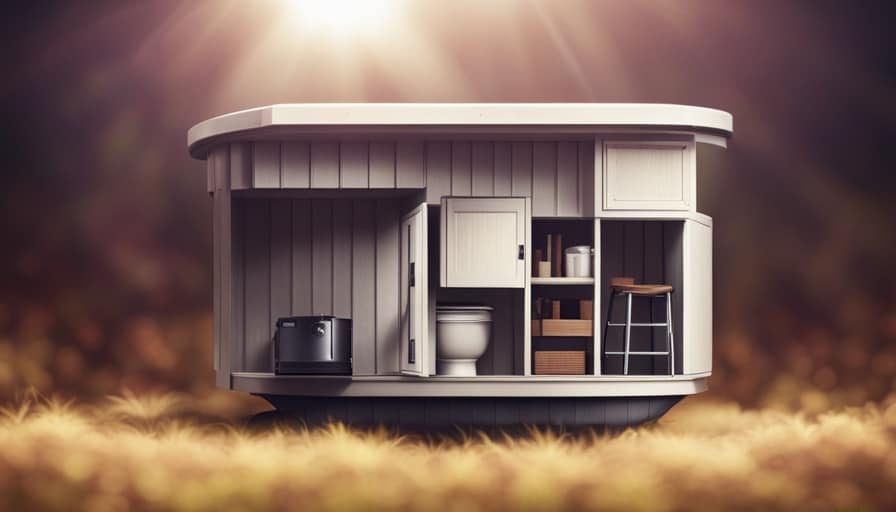
In terms of building codes, tiny houses in Austin must comply with the same regulations as traditional homes. This ensures safety and structural integrity.
It’s important to consult the city’s zoning and building codes before embarking on the journey of living in a tiny house in Austin, Texas.
Affordable Housing Options
We can explore affordable housing options in Austin, Texas, where tiny houses provide a cost-effective alternative for those looking to live in the city.
With the rising cost of housing in Austin, many residents are seeking alternative housing options that are more affordable.

Tiny houses, which are typically around 400 square feet or less, offer a solution to this problem. These smaller homes can be built at a fraction of the cost of a traditional house, making them an attractive option for budget-conscious individuals.
Additionally, Austin’s zoning regulations allow for tiny houses to be built on private property, as long as they meet certain criteria. This flexibility in zoning regulations provides more opportunities for individuals to find affordable housing in the city.
Community Support Networks?
Our tight-knit community and strong support networks in Austin, Texas make it an ideal city for tiny house living. Austin residents have embraced the concept of community gardens, which provide a space for neighbors to come together and grow their own fresh produce. These gardens not only promote sustainable living but also foster a sense of camaraderie among residents. Furthermore, Austin’s emphasis on shared resources ensures that tiny house dwellers have access to all the amenities they need. From shared laundry facilities to communal spaces for socializing, Austin’s support networks make living in a tiny house a comfortable and enjoyable experience. The table below highlights some of the community support networks available in Austin:
| Community Support Networks | Description |
|---|---|
| Community Gardens | Spaces for neighbors to grow fresh produce together. |
| Shared Laundry Facilities | Accessible laundry facilities for all residents. |
| Communal Social Spaces | Areas for residents to gather and socialize. |
| Resource Sharing Programs | Programs that facilitate sharing of tools, equipment, and other resources. |
| Neighborhood Associations | Groups that promote community engagement and support. |
Seattle, Washington
Seattle, Washington is known for its high cost of living, and this extends to the tiny house market as well. Despite the affordability concerns, there’s still a strong interest in tiny houses in the city.
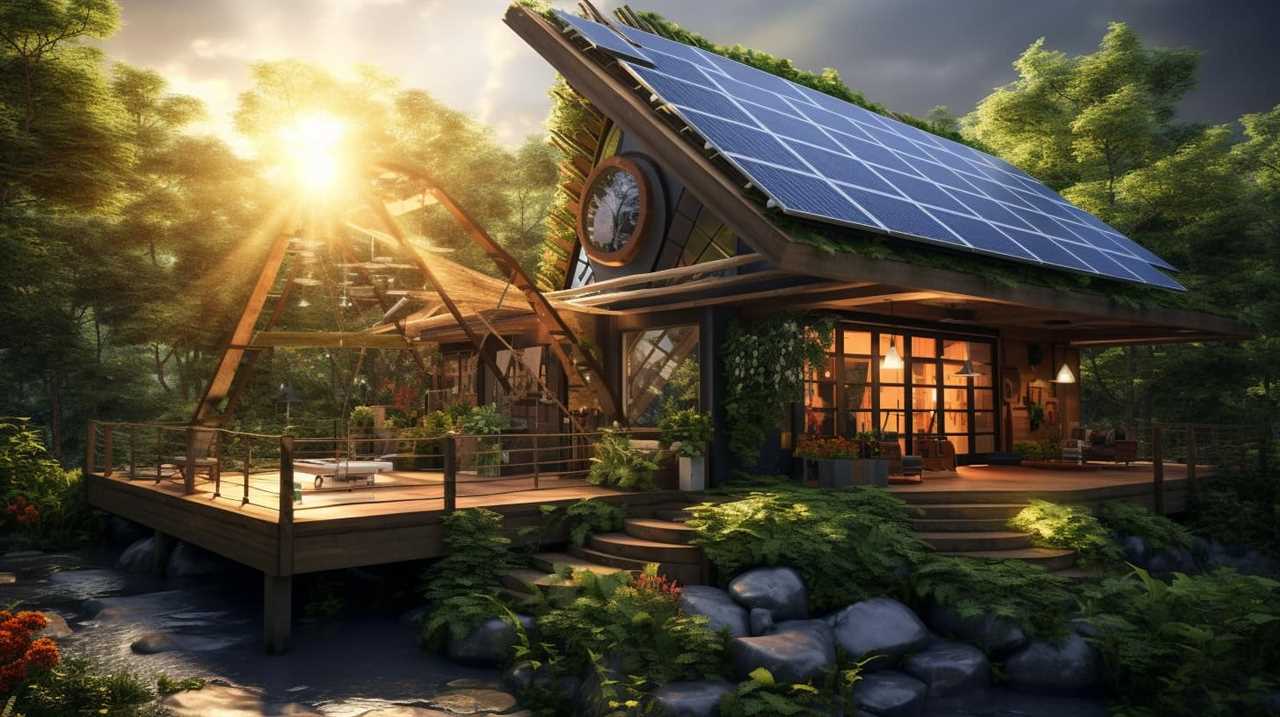
However, navigating the complex regulations surrounding tiny houses can be challenging, with strict rules on zoning and building codes.
Affordability of Tiny Houses
Living in a tiny house can be an affordable option for many people in Seattle, Washington. With the rising cost of traditional housing, tiny houses offer a more budget-friendly alternative. There are several financing options available for those interested in owning a tiny house. These include personal loans, RV loans, and even crowdfunding campaigns. Additionally, alternative housing communities have been gaining popularity in Seattle. These communities provide an affordable and supportive environment for tiny house owners, offering shared resources and a sense of community. Here is a table showcasing some of the financing options and alternative housing communities in Seattle:
| Financing Options | Alternative Housing Communities |
|---|---|
| Personal loans | The Tiny House Village |
| RV loans | Tiny House Estates |
| Crowdfunding campaigns | The Tiny House Collective |
Tiny House Regulations
Before we dive into the details of tiny house regulations in Seattle, Washington, let’s explore the benefits of living in this thriving city.
Seattle is known for its vibrant culture, strong job market, and stunning natural beauty.
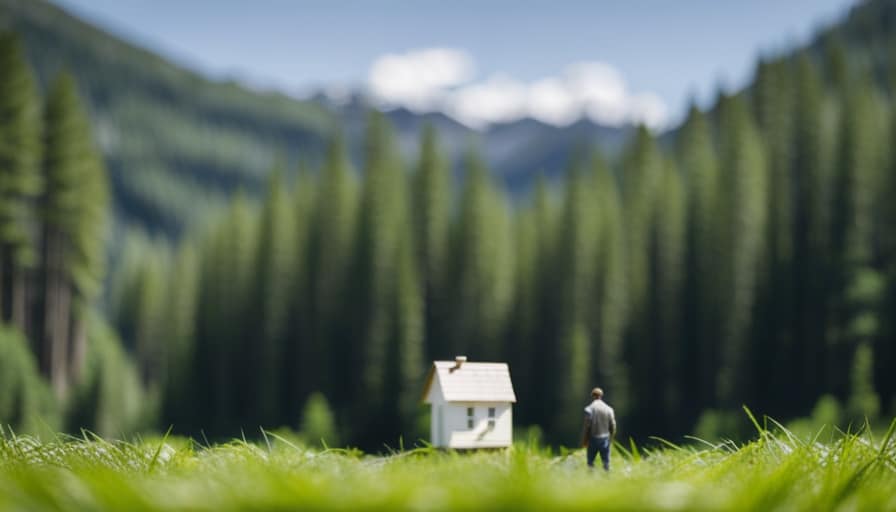
However, when it comes to tiny house living, it’s important to understand the local regulations. In Seattle, tiny houses are subject to specific zoning laws and building codes.
The city has designated certain areas where tiny houses are allowed, known as ‘tiny house villages.’ These villages provide a sense of community and offer amenities like shared spaces and utilities.
Additionally, Seattle has strict building codes that ensure safety and structural integrity. These regulations help maintain the quality of tiny house communities in the city and provide a framework for sustainable living.
Boulder, Colorado
While we were researching the best cities to live in a tiny house, we discovered that Boulder, Colorado offers a variety of advantages for tiny house enthusiasts. Not only does Boulder have a thriving community of like-minded individuals, but it also provides numerous opportunities for outdoor activities. Community organizations in Boulder actively support the tiny house movement, providing resources and assistance to those looking to downsize and live a simpler, more sustainable lifestyle. The city’s proximity to the stunning Rocky Mountains offers endless opportunities for hiking, biking, and other outdoor adventures. With its commitment to sustainable living, it’s no wonder that Boulder is a top choice for tiny house living.

Now, let’s explore another fantastic city for tiny house enthusiasts: Asheville, North Carolina.
Asheville, North Carolina
When it comes to tiny house regulations, Asheville, North Carolina is a city that stands out. It has embraced the tiny house movement and has adopted progressive zoning and building codes that allow for the construction of tiny homes.
Additionally, Asheville offers a strong sense of community and support for tiny house dwellers, with various organizations and meetups dedicated to this lifestyle.
Moreover, the city’s natural surroundings and amenities, such as the Blue Ridge Mountains and vibrant downtown area, make Asheville an attractive choice for those seeking a tiny house lifestyle.
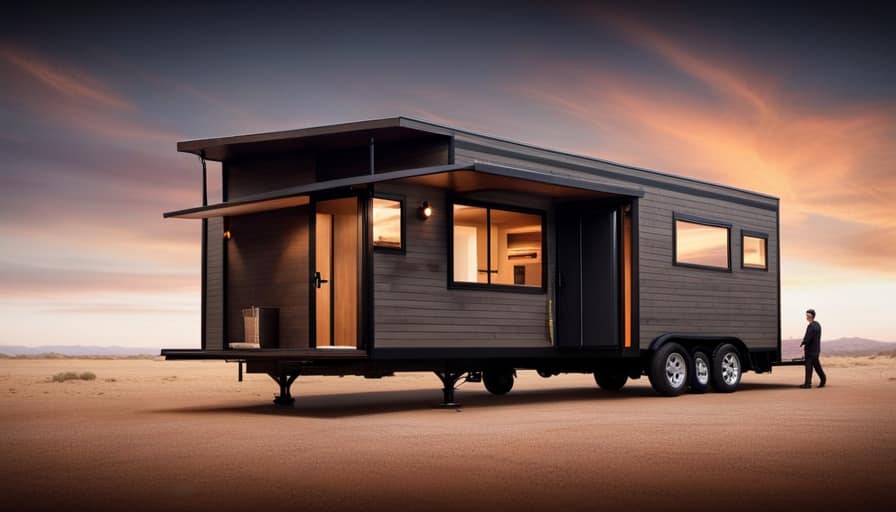
Tiny House Regulations
As tiny house enthusiasts, we’re thrilled to explore the regulations surrounding tiny houses in Asheville, North Carolina.
When it comes to tiny house building codes, Asheville has made significant progress in accommodating these unique homes. The city has adopted the 2018 International Residential Code Appendix Q, which provides specific guidelines for tiny houses on a foundation. This ensures that tiny homes meet the necessary safety standards and structural requirements.
In terms of zoning regulations, Asheville allows tiny houses on wheels as accessory dwelling units on residential properties, subject to certain restrictions. This allows homeowners to have a tiny house on their property for family members or as rental units.
Overall, Asheville’s regulations show a commitment to embracing the tiny house movement and providing opportunities for affordable and sustainable housing options.
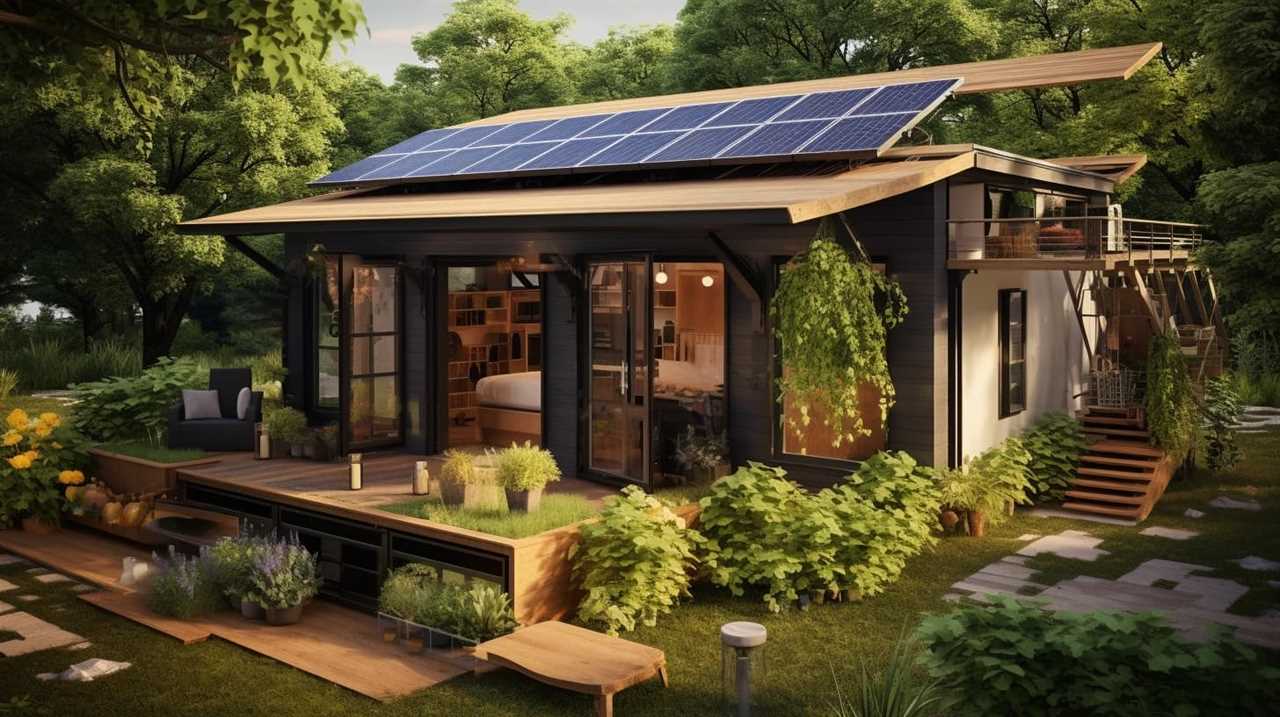
Moving forward, let’s explore the community and support available for tiny house enthusiasts in Asheville.
Community and Support
Our favorite aspect of living in Asheville, North Carolina is the tight-knit community and support system for tiny house enthusiasts. Asheville has a strong sense of community engagement, with local resources dedicated to helping tiny house owners navigate the challenges of living in a small space. The city offers workshops and meetups where like-minded individuals can connect and share their experiences. These gatherings provide a valuable opportunity for learning, problem-solving, and building relationships within the tiny house community.
Additionally, Asheville has a network of local resources that cater specifically to the needs of tiny house owners, such as builders, designers, and suppliers. This level of community support fosters a sense of belonging and enables residents to make the most of their tiny house lifestyle. With such a strong network of support, living in a tiny house in Asheville becomes much easier and more enjoyable.
Transitioning into the subsequent section, let’s now explore the natural surroundings and amenities that make Asheville an ideal city for tiny house living.

Natural Surroundings and Amenities
We also appreciate the beautiful natural surroundings and amenities that Asheville, North Carolina offers for those living in a tiny house. The city is nestled in the Blue Ridge Mountains, providing breathtaking views and numerous outdoor activities. Whether you enjoy hiking, biking, or simply taking in the scenery, Asheville has it all.
In addition to the natural surroundings, the city offers a range of amenities that make tiny house living convenient and enjoyable. Here are three notable ones:
-
Access to Parks and Green Spaces: Asheville boasts a variety of parks and green spaces, allowing residents of tiny houses to enjoy the outdoors without venturing too far from home. From expansive parks with walking trails to smaller, neighborhood green spaces, there’s something for everyone.
-
Vibrant Local Food Scene: For those who appreciate farm-to-table dining experiences, Asheville’s local food scene is a dream come true. With an abundance of farmers markets, organic grocery stores, and farm-to-table restaurants, residents can easily access fresh and sustainable food options.
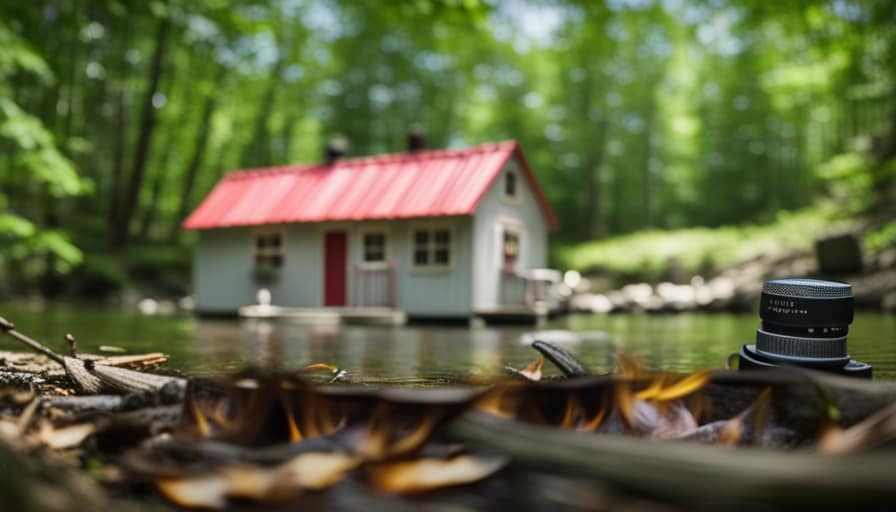
-
Cultural and Entertainment Options: Despite its small size, Asheville offers a rich cultural scene with art galleries, theaters, and music venues. Residents can enjoy live performances, exhibitions, and festivals throughout the year, providing a well-rounded experience beyond the natural surroundings.
San Francisco, California
Although it’s known for its high cost of living, San Francisco, California offers an attractive option for tiny house living. Despite the challenges posed by limited space and high property prices, community organizations in San Francisco have been working to create opportunities for tiny house dwellers. These organizations have been instrumental in advocating for changes in zoning laws to accommodate tiny houses on wheels and promote sustainable, affordable housing options. The city has recognized the need for more affordable housing and has taken steps to support innovative housing solutions like tiny houses. With its progressive mindset and commitment to sustainable living, San Francisco provides a unique environment for those looking to live in a tiny house.
Now, let’s explore another city that offers a great setting for tiny house living: Savannah, Georgia.
Savannah, Georgia
Savannah, Georgia offers a charming and historic atmosphere that’s perfect for tiny house living. Here are three reasons why Savannah is an ideal city for those seeking affordable housing and community support:

-
Affordable Housing: In Savannah, the cost of living is relatively low compared to other cities, making it easier to find affordable housing options. This makes it an attractive choice for individuals looking to downsize and live in a tiny house.
-
Community Support: Savannah has a strong sense of community, with residents who are friendly and welcoming. There are various organizations and initiatives in place that support affordable housing and promote community engagement. This creates a supportive environment for tiny house dwellers, offering opportunities for social connections and a sense of belonging.
-
Historic Charm: Savannah’s rich history and unique architecture add to its appeal. Living in a tiny house in this city allows residents to immerse themselves in the beauty and charm of the historic district, with its oak-lined streets, beautiful squares, and picturesque buildings.
Transition: Now that we’ve explored the benefits of tiny house living in Savannah, let’s turn our attention to another city that offers great opportunities for tiny house enthusiasts: Nashville, Tennessee.
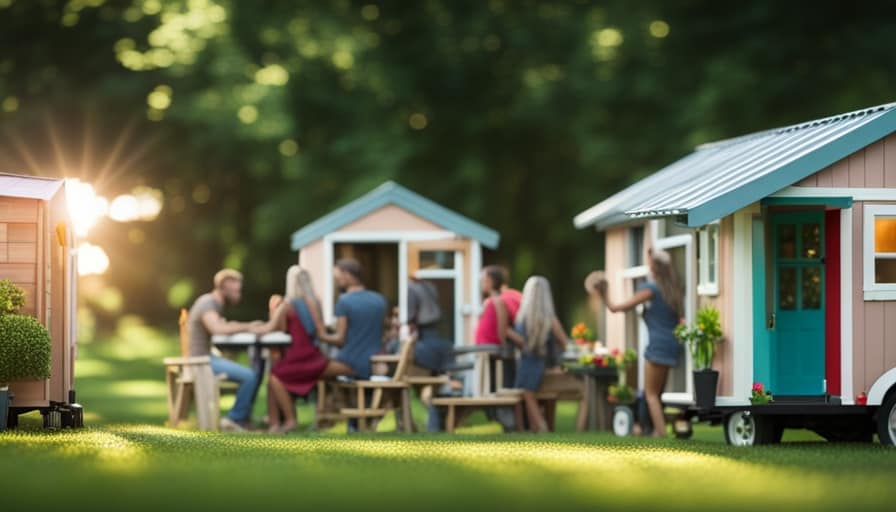
Nashville, Tennessee
One reason why Nashville, Tennessee is an appealing city for tiny house living is its vibrant music scene. Nashville, often referred to as the ‘Music City,’ is renowned for its rich musical heritage and thriving industry. This cultural backdrop provides a unique and lively atmosphere for those seeking a tiny house lifestyle.
Moreover, Nashville offers affordable housing options that cater to various needs and budgets. The city has seen a rise in the popularity of tiny houses, leading to the development of communities and neighborhoods specifically designed for these dwellings.
Additionally, Nashville boasts robust community support networks for tiny house enthusiasts, providing resources, guidance, and opportunities for connection and collaboration. These factors contribute to making Nashville an attractive destination for individuals looking to embrace the tiny house movement while enjoying the city’s vibrant music culture.
Burlington, Vermont
We are excited to share that Burlington, Vermont is another fantastic option for living in a tiny house. This charming city offers a welcoming community and a range of amenities that make it an ideal place for tiny house living.
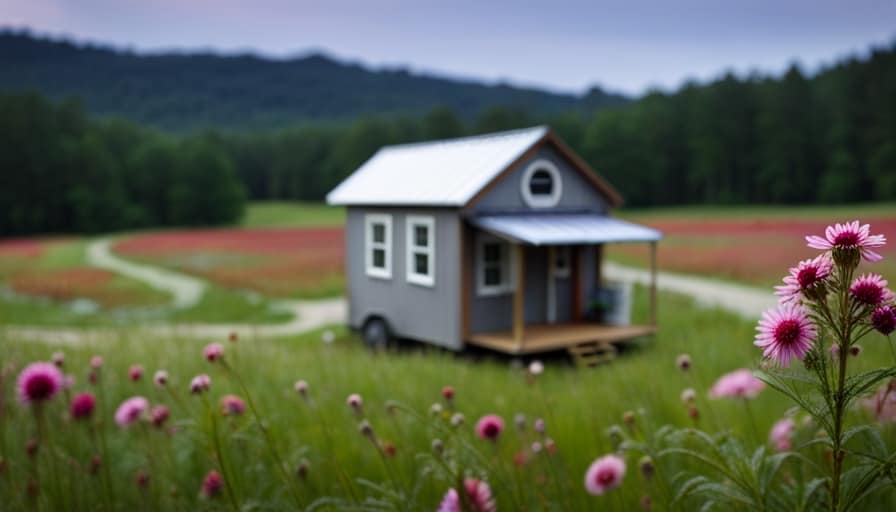
Here are three reasons why Burlington is a great choice:
-
Tiny House Building Codes: Burlington has adopted progressive building codes that allow for the construction of tiny houses. These codes ensure that tiny homes are built safely and meet all necessary standards.
-
Zoning Laws: The city has also implemented zoning laws that allow for the placement of tiny houses on residential properties. This means that you can find a suitable spot for your tiny house without any legal hurdles.
-
Financing Options: Burlington offers various financing options for tiny house enthusiasts. From traditional mortgages to specialized loans, you can find a financing solution that fits your needs and budget.
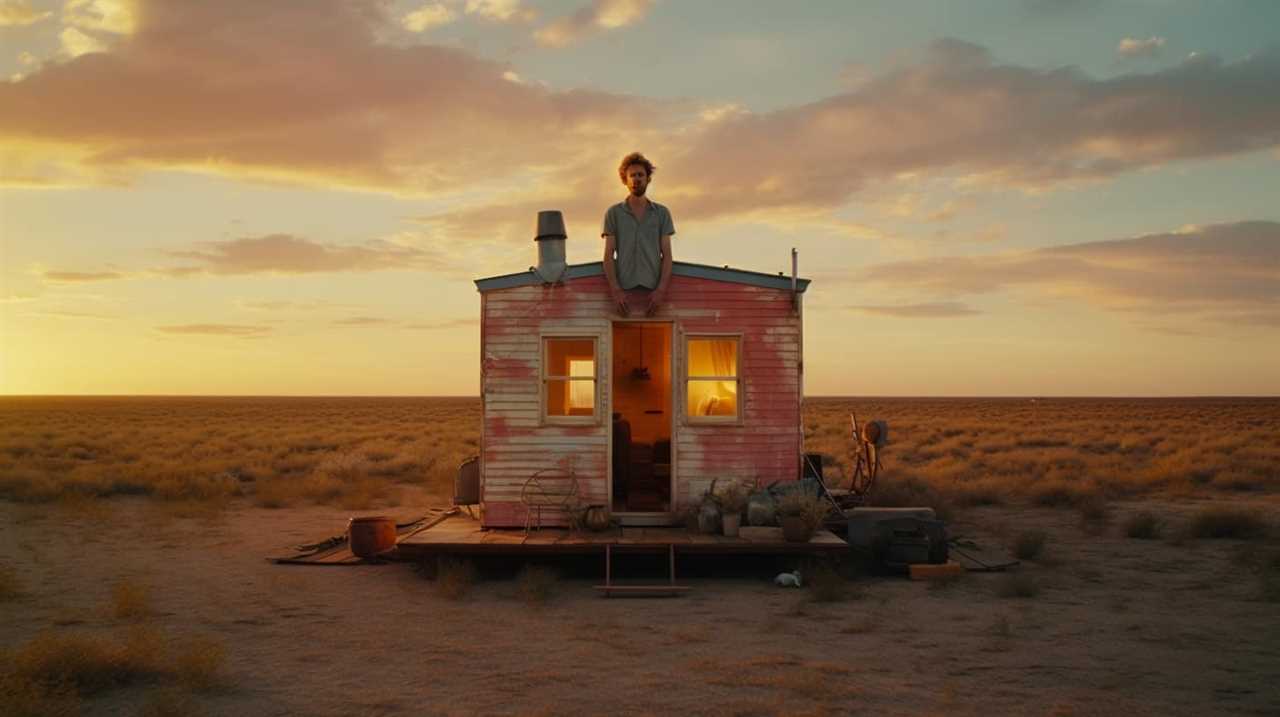
With its favorable building codes, accommodating zoning laws, and financing options, Burlington provides an excellent environment for tiny house living. Additionally, the city has available land for tiny houses, making it even more appealing for those looking to downsize and embrace a simpler lifestyle.
Minneapolis, Minnesota
Minneapolis, Minnesota is a great option for those looking to live in a tiny house. Not only does it offer affordable housing options, but it also has strong community support networks in place. The city provides a range of resources and services to help tiny house dwellers thrive and connect with like-minded individuals. Let’s take a closer look at some of the key features that make Minneapolis an ideal choice for tiny house living:
| Features | Benefits |
|---|---|
| Affordable housing | Allows for financial flexibility |
| Strong community | Provides a sense of belonging |
| Supportive networks | Offers assistance and resources |
| Sustainable lifestyle | Reduces environmental impact |
| Accessible amenities | Convenience and quality of life |
With its affordable housing options and supportive community, Minneapolis is a city that understands the needs of tiny house enthusiasts. Whether you’re seeking a simpler lifestyle or looking to minimize your ecological footprint, Minneapolis has the infrastructure and resources to make your tiny house dreams a reality.
Frequently Asked Questions
How Much Does It Cost to Build a Tiny House in These Cities?
When comparing cost to build a tiny house in different cities, factors like building materials, labor, and location come into play. It’s important to consider these variables to determine the overall expense.

Are There Any Specific Zoning Regulations or Restrictions for Tiny Houses in These Cities?
Zoning regulations and restrictions for tiny houses vary in these cities. It’s important to research and understand the rules before building. Additionally, consider the impact on tiny house building costs in each location.
Are There Any Communities or Neighborhoods Dedicated to Tiny House Living in These Cities?
Communities dedicated to tiny house living are important to consider when looking at cities. We should also explore the zoning regulations in these areas to ensure that they are accommodating for this type of housing.
What Are the Average Monthly Expenses Associated With Living in a Tiny House in These Cities?
Living in a tiny house comes with its financial perks. We’ve crunched the numbers and found that the average monthly expenses associated with this lifestyle are considerably lower than traditional housing options.
Are There Any Incentives or Programs Available for People Interested in Living in a Tiny House in These Cities?
There are various incentives for tiny house living, such as tax breaks and grants. Additionally, there are financing options available specifically for tiny houses, making it more accessible for those interested in this lifestyle.
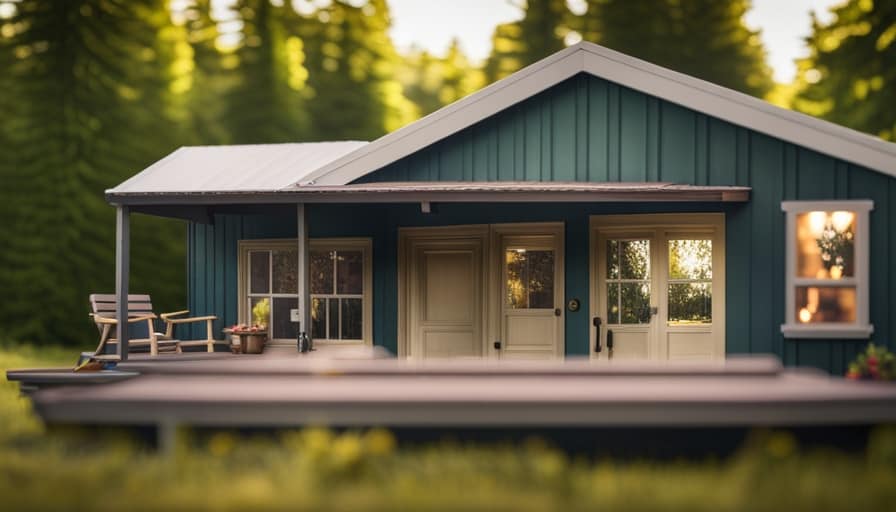
Conclusion
In conclusion, these ten cities offer a promising haven for those seeking the tiny house lifestyle. With their vibrant communities, progressive attitudes, and diverse opportunities, they symbolize a new era of sustainable living.
From the eco-conscious mindset of Portland to the creative energy of Austin, these cities are leading the way in embracing the concept of minimalism.
By choosing to settle in these locations, individuals can not only reduce their ecological footprint but also find a sense of fulfillment and connection within their communities.
I’m Theodore, and I love tiny houses. In fact, I’m the author of Tiny House 43, a book about tiny houses that are also tree houses. I think they’re magical places where imaginations can run wild and adventures are just waiting to happen.
While tree houses are often associated with childhood, they can be the perfect adult retreat. They offer a cozy space to relax and unwind, surrounded by nature. And since they’re typically built on stilts or raised platforms, they offer stunning views that traditional homes simply can’t match.
If you’re looking for a unique and romantic getaway, a tree house tiny house might just be the perfect option.
